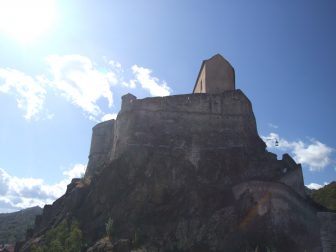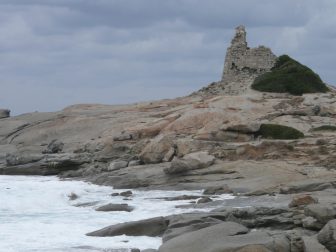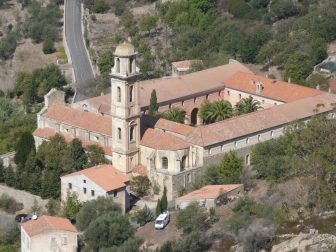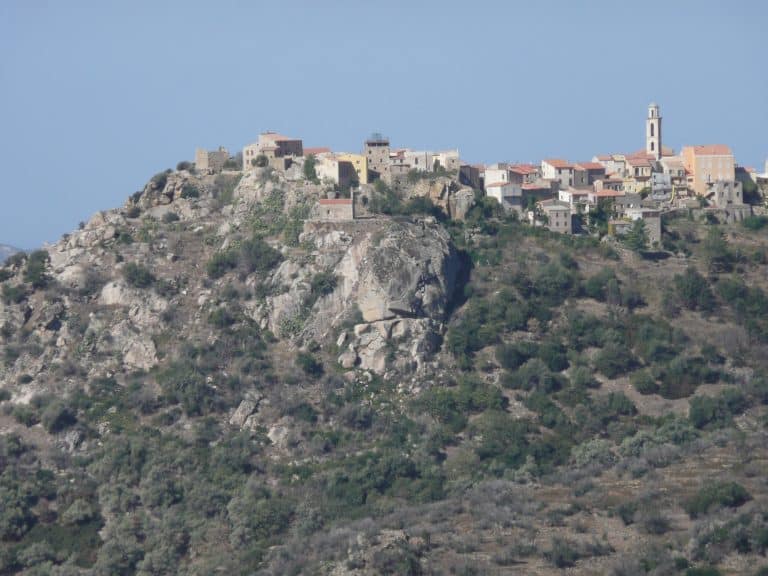
[Sept. 2007] This is a continuation of the walking tour on Corsica, France.
The next day, I left the group and visited the villages in the Balagne region on my own.
At first, I climbed up to the top of the mountain with the chapel that we climbed on the first day with everyone, but the wind was too strong, so tour leader, John changed the schedule.
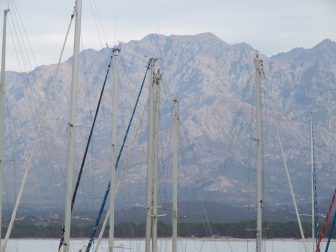
He decided not to walk in the mountains because of the possibility of a forest fire in strong winds, and to enjoy a little taste of the route called GR20, which is a mecca for walkers.
The GR20 is a 180km road that runs along the ridge that connects from the southeast to the northwest of Corsica, and is said to be the most difficult route to conquest even among people who love walking as a sport.
The inland rocky mountains seen from Calvi where we were staying are about 2500 meters high, and they walk endlessly in those mountains.
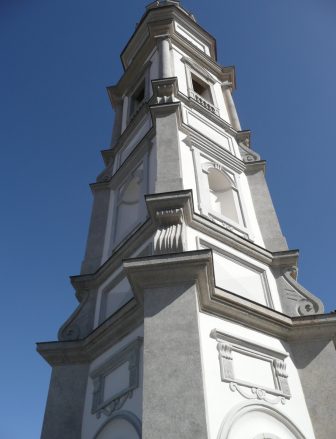
When I heard John’s decision, I felt awkward, but John noticed and said, “I think it’s a little too much for Miranda, so you take a rest in Calvi today.”
I was relieved and went down the mountain alone.
It’s good to be immersed in a feeling of liberation, but then I was at a loss as to what to do on the day.
After looking at the guidebook, I wanted to see more villages in the Balagne region, which I couldn’t enjoy enough on the previous day’s walk, so I decided to hire a taxi.
I cannot speak French at all, so I had a hard time getting the driver to understand my intentions, but in the end I managed and spent more than an hour visiting the three villages.
First village was Calenzana.
It is said that it is the village at the entrance of GR20, and from here, there is another walking route, “Mare e Monti Nord (the road connecting the sea and the northern mountains)”.
In the village there was a church called Eglise St-Blaise with a prominent bell tower.
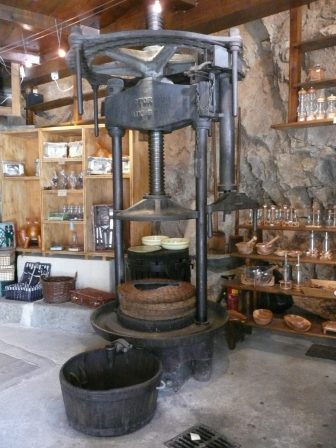
According to the guidebook, they started building this church in 1691 and it took 16 years to finish it.
I wanted to take a peek inside but unfortunately it was closed.
Next is Zilia, a mineral water producing area.
There was nothing particular to see in the village itself, and the driver stopped at a good view.
The village we could see from here, Montemaggiore, was our next destination.
It’s a village with houses on a hill, and I think we had seen this as a distant view during the walking the day before.
This village is famous for olive oil productions, and the driver took me to the shop before entering the village.
He took a picture of me with a donkey in front of the shop.
Donkeys seemed to occupy an important position in everyday life on this mountainous island.
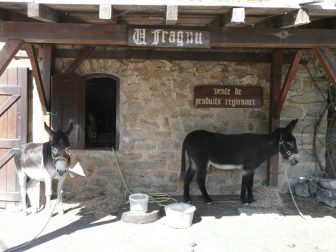
I wish I had been able to talk with this local driver and asked for various information, but it was a shame that I couldn’t understand the language at all.
It was not that he had no service spirit at all, but he seemed to be unfamiliar with foreigners.
The names of the villages sounded all Italian.
After all, Corsica had been ruled by Genoa for a long time.
It is said that it became French territory because Genoa had trouble with the island’s independence movement in the 18th century and asked France for support.
By the way, it is famous that Napoleon was born on Corsica, though his name did not come up at all during this holiday.

He was born in Ajaccio, in the southeastern part of the island, apparently shortly after the island became French territory.
Now that my village tour was over and I was back in Calvi.
It’s lunch time.
I was a little reluctant to go to a restaurant alone in such a resort , but I had been thinking it was boring to have sandwiches every lunch with the people on the tour, so this was a chance.
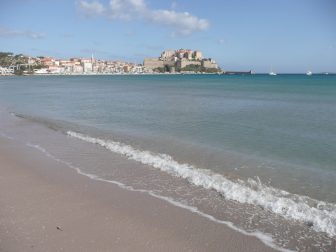
I entered one of the restaurants facing the harbour.
I had seafood casserole with beer and panna cotta for dessert.
Yes, I wanted to eat something like this.
After the meal, I took a walk on the beach of Calvi and spent a relaxing time like a proper holiday.


